Composting: May All Your Dirt be Soil
When I was a kid, my mom kept a white enamel canister we called “the food scraps bucket” in a cabinet drawer under the sink. She still does, but now it actually goes in a compost bin and back then it went in the rear culvert. Possibly for the animals (we lived in the country) or possibly just to avoid putting it in the landfill trash. Clearly, my childhood self was sketchy on the details.
The thing about this memory that snags me is that practice of separating food waste is an idea I grew up with, a habit that was part of my daily life, and something I thought about not at all starting the moment I moved out. Why? I imagine my adolescent self didn’t recognize the importance – as evidenced by my confusion about what we were really doing anyway. Regardless, today I can.
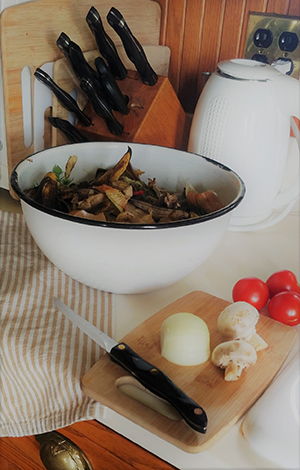 (Mom’s Food Scraps Bowl)
(Mom’s Food Scraps Bowl)
In a recent study by the national nonprofit, ReFED, the US produced 91 million tons of surplus food in 2021, nearly half of which was produced by households and 36% of which went directly into landfills. 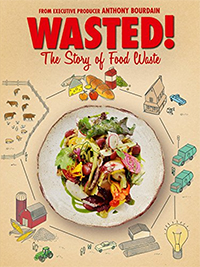 (To be further horrified, check out the documentary Wasted! The Story of Food Waste from your local branch library.)
(To be further horrified, check out the documentary Wasted! The Story of Food Waste from your local branch library.)
The point is since landfills are designed for storage and not decomposition (Kathryn Kellogg, 101 Ways to Go Zero Waste) the lack of oxygen keeps food scraps that would otherwise be biodegradable from breaking down. Instead, they linger, taking up space and releasing methane. “To address the underlying problem (of food waste), experts say the most important change in developed countries like the US will have to be one of mindset and cultural expectations around food, where cheap abundance is the norm.” - Deena Shanker, Bloomberg News.
But, in the meantime (as this is likely to take quite a while) – you guessed it – composting!
The City of Milwaukee hosts an annual compost bin sale through the Department of Sanitation each spring. Check out the site this winter to pre-order your bin for 2024. But remember that many receptacles can serve as composting bins and store food straps for future composting. Because the important thing about composting is – ratios!
An ideal compost bin includes a 3:1 ratio of Brown Material (3) to Green Material (1) and would be held either in a suitable bin or in a confined 3’ x 3’ portion of the yard. Brown material includes dry, natural fibers such as leaves, twigs, dead flowers, (dry) shredded cardboard or paper, and dryer lint. Whereas green material is comprised of spoiled fruits and veggies, fruit and veggie rinds, peels and cores, coffee grounds, egg shells, and fresh plant clippings.
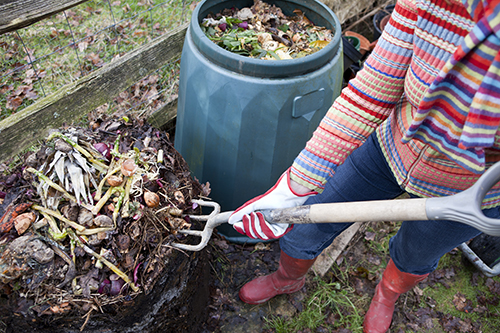
Layer your brown and green materials and aerate your compost by turning it weekly to provide it with oxygen. It may also be necessary to sprinkle with water – compost should be warm and slightly moist – around the texture of a lightly damp sponge. Too much water and it will start to rot. The time frame for creating garden-usable, nutrient-rich soil for your garden will depend on size and temperature and may range from three months to a year.
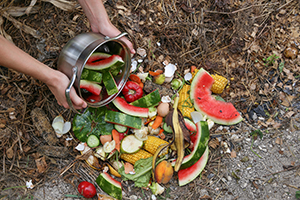 It is also important to remember what NOT to compost: fats, oils, grease, meat, poultry, fish, dairy products, and know that many commercial goods that are advertised as compostable, such as bamboo toothbrushes and compostable bags are meant for processing in industrial facilities, but will likely not break down effectively in a backyard bin.
It is also important to remember what NOT to compost: fats, oils, grease, meat, poultry, fish, dairy products, and know that many commercial goods that are advertised as compostable, such as bamboo toothbrushes and compostable bags are meant for processing in industrial facilities, but will likely not break down effectively in a backyard bin.
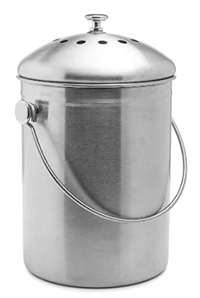 Food scraps waiting to be added to maintain proper ratios can be stored in anything from a terracotta pot to an enamel bowl to a stainless-steel bin with a charcoal filter and placed in the back of the fridge or freezer to avoid odors and bugs.
Food scraps waiting to be added to maintain proper ratios can be stored in anything from a terracotta pot to an enamel bowl to a stainless-steel bin with a charcoal filter and placed in the back of the fridge or freezer to avoid odors and bugs.
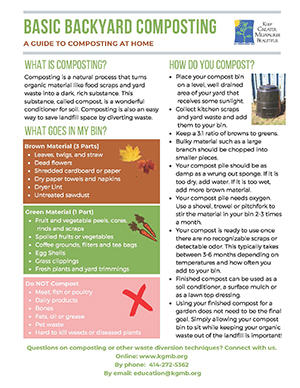
For some excellent local resources, check out this quick-start Basic Backyard Composting guide from Milwaukee Recycles and this MPL video tutorial also available on the library's YouTube page.
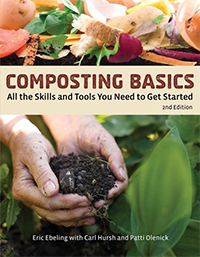
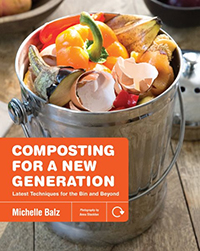 Additionally, there are tons of print and digital resources available. Check out Composting Basics by Eric Ebeling from the library or Composting for a New Generation by Michelle Balz, an ebook available on Hoopla.
Additionally, there are tons of print and digital resources available. Check out Composting Basics by Eric Ebeling from the library or Composting for a New Generation by Michelle Balz, an ebook available on Hoopla.
If committing to a home composting bin seems unlikely for your lifestyle or living space, consider saving your food scraps (or really green and brown material) and partnering with a local community garden or contracting a compost pick-up service by a local provider for about the price of a Netflix subscription. My personal favorite thing about composting? It’s low stakes. If you make rot, not soil, start again. As with anything else, the starting is the hardest part. Best of luck - may all your dirt be soil.
